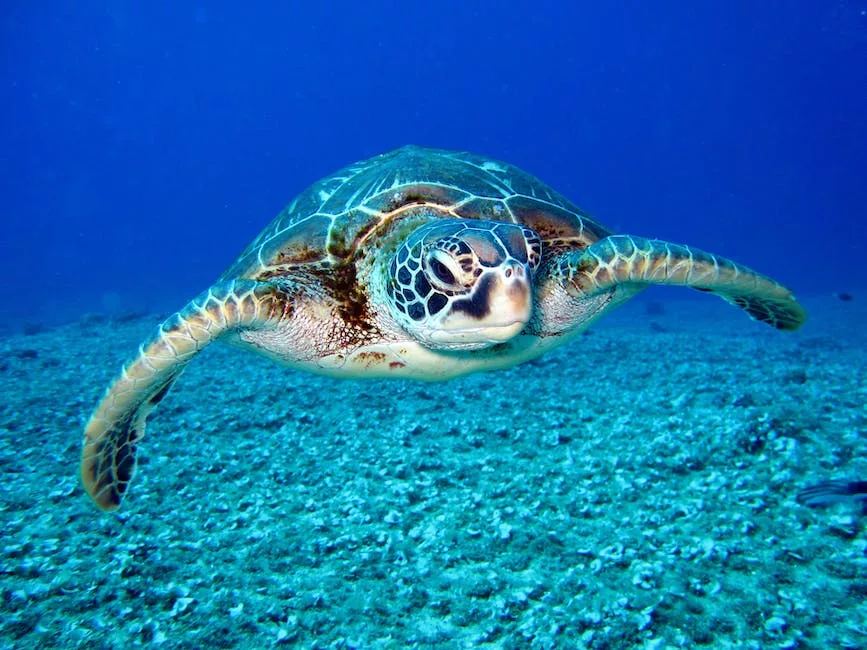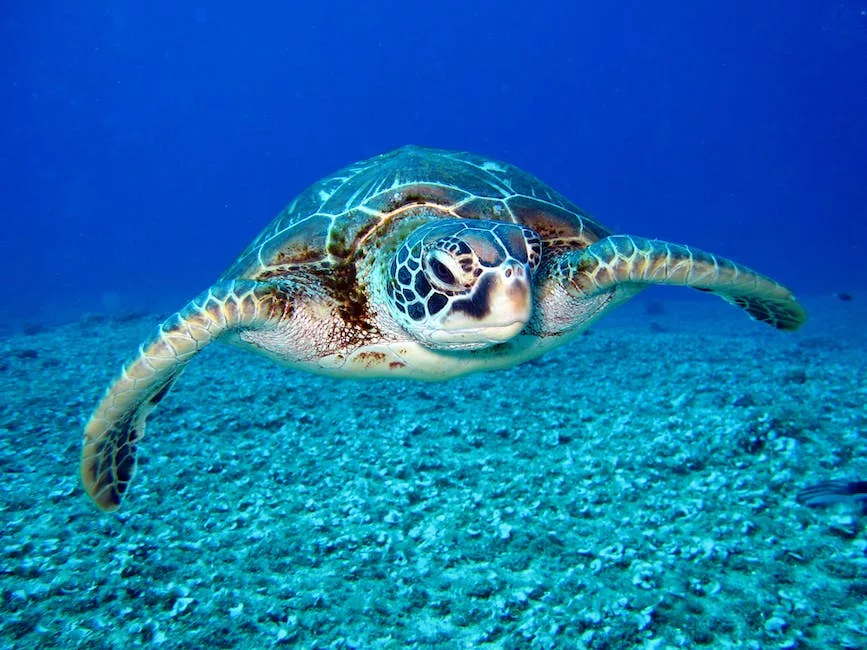Introduction
The Weekly Turtle Update is a regular report that provides information and updates on the status and conservation efforts of turtles around the world. This report aims to raise awareness about the challenges faced by turtles, highlight conservation initiatives, and share important news and research findings related to these fascinating creatures. By keeping readers informed about the latest developments in turtle conservation, the Weekly Turtle Update seeks to promote a greater understanding and appreciation for these vulnerable species.
The Importance of Consistent Turtle Monitoring

Welcome to our weekly turtle update! This week, we want to talk about the importance of consistent turtle monitoring. Now, I know what you’re thinking – “Why do we need to keep an eye on these slow-moving creatures?” Well, my friend, let me tell you, turtles may be slow, but they are an essential part of our ecosystem.
First of all, turtles are like the grandpas of the animal kingdom. They have been around for millions of years, and they have seen it all. These wise old creatures have a lot to teach us about the history of our planet. By monitoring their populations, we can gain valuable insights into the health of our environment.
But it’s not just about history lessons, folks. Turtles play a crucial role in maintaining the balance of our ecosystems. They are like the janitors of the natural world, keeping things tidy and in order. You see, turtles love to munch on algae, which can sometimes grow out of control and suffocate other aquatic life. By keeping the algae in check, turtles ensure that other species can thrive.
Now, let’s talk about the funny side of turtle monitoring. Picture this: a group of scientists, armed with clipboards and binoculars, trying to keep up with these slow-moving creatures. It’s like a race between a turtle and a snail! But hey, slow and steady wins the race, right?
In all seriousness, though, consistent turtle monitoring is no laughing matter. It requires dedication and patience. Scientists spend hours observing these fascinating creatures, documenting their behavior, and collecting data. This information is then used to assess the health of turtle populations and make informed conservation decisions.
But it’s not just scientists who can contribute to turtle monitoring. Citizen scientists, like you and me, can also play a vital role. By reporting turtle sightings and participating in monitoring programs, we can help gather valuable data that can make a real difference in turtle conservation efforts.
So, how can you get involved? Well, first of all, keep your eyes peeled for turtles in your local area. If you spot one, take note of the species, location, and any other relevant information. You can then report your sighting to local conservation organizations or participate in citizen science projects.
If you’re feeling extra adventurous, you can even volunteer to assist scientists in their monitoring efforts. Imagine spending a day in the field, observing these ancient creatures up close. It’s like being in a real-life episode of “Turtle Tales”!
In conclusion, consistent turtle monitoring is of utmost importance. These slow-moving creatures may not be the flashiest or most exciting animals, but they play a vital role in our ecosystems. By keeping a watchful eye on turtle populations, we can gain valuable insights into the health of our environment and make informed conservation decisions. So, let’s all do our part and help protect these wise old grandpas of the animal kingdom. Together, we can ensure a brighter future for turtles and our planet.
Fascinating Facts about Different Turtle Species
Welcome to our weekly turtle update! This week, we’re diving into the fascinating world of different turtle species. Get ready to be amazed by these incredible creatures and their unique characteristics. From the speedy leatherback turtle to the adorable red-eared slider, there’s a turtle for everyone to love.
Let’s start with the leatherback turtle, also known as the Usain Bolt of the turtle world. These magnificent creatures can reach speeds of up to 22 miles per hour, making them the fastest swimmers among all turtle species. Just imagine a turtle zooming past you in the ocean, leaving you in awe of its incredible agility. It’s like watching a turtle version of the Olympics!
Now, let’s talk about the red-eared slider, the turtle with a fashion statement. These turtles have a distinctive red patch on each side of their head, giving them a unique and stylish appearance. It’s like they’re wearing tiny red earrings, always ready to strut their stuff in the turtle fashion world. Move over, runway models, the red-eared sliders are here to steal the show!
Next up, we have the loggerhead turtle, the heavyweight champion of the turtle kingdom. These turtles can weigh up to a whopping 350 pounds, making them the largest hard-shelled turtles in the world. Just imagine trying to lift one of these giants! It’s like going to the gym and attempting to bench press a small car. These turtles are true powerhouses, and they definitely don’t skip arm day.
Now, let’s take a look at the hawksbill turtle, the artist of the turtle world. These turtles have a beautiful shell with intricate patterns that resemble a work of art. It’s like they have their own personal tattoo artist, creating stunning designs on their shells. Move over, Picasso, the hawksbill turtles are the true masters of artistic expression.
Moving on, we have the green sea turtle, the vegetarian of the turtle world. These turtles have a diet consisting mainly of seagrass and algae, making them the herbivores of the ocean. It’s like they’re the health-conscious turtles, always opting for a green smoothie instead of a juicy steak. They’re the true embodiment of the saying, “You are what you eat.”
Last but not least, let’s talk about the snapping turtle, the grumpy old man of the turtle world. These turtles have a reputation for being a bit cranky and easily agitated. It’s like they woke up on the wrong side of the pond every day. But don’t let their grumpy demeanor fool you; they’re just trying to protect themselves with their powerful jaws. It’s like they have a sign that says, “Beware of the snapping turtle,” and you better listen!
And there you have it, folks, a glimpse into the fascinating world of different turtle species. From the speedy leatherback to the grumpy snapping turtle, each species has its own unique characteristics that make them truly remarkable. So next time you see a turtle, take a moment to appreciate their incredible diversity and the wonders of nature. Until next time, keep swimming, my turtle-loving friends!
Conservation Efforts to Protect Turtle Habitats
Conservation Efforts to Protect Turtle Habitats
Hey there, turtle enthusiasts! It’s time for your weekly turtle update, and today we’re diving into the wonderful world of conservation efforts to protect our shelled friends’ habitats. So grab your snorkels and let’s get started!
Now, turtles are pretty amazing creatures. They’ve been around for millions of years, surviving all sorts of challenges. But in recent times, their habitats have been under threat due to human activities. That’s where conservation efforts come in, like the superheroes of the turtle world.
One of the key strategies in protecting turtle habitats is creating protected areas. These are like exclusive resorts for turtles, where they can live and thrive without any disturbance from us pesky humans. These areas are carefully chosen to provide the perfect conditions for turtles to nest, feed, and just be their awesome turtle selves.
But creating protected areas is not as simple as drawing a line on a map and saying, “Hey, turtles, this is your spot!” It takes a lot of planning and collaboration between scientists, government agencies, and local communities. They work together to identify the most critical turtle habitats and establish rules and regulations to ensure their protection.
Another important aspect of turtle conservation is raising awareness. You see, turtles are not exactly the most vocal creatures. They can’t go around shouting, “Hey, humans, stop destroying our homes!” So it’s up to us to be their voice. Conservation organizations and passionate individuals organize campaigns, events, and educational programs to spread the word about the importance of turtle habitats and the need to protect them.
But let’s not forget about the turtles themselves. They play a crucial role in their own conservation efforts. How, you ask? Well, turtles are pretty sneaky when it comes to nesting. They find the perfect spot on a beach, dig a hole, lay their eggs, and cover them up like it’s a secret treasure. This natural behavior helps protect their eggs from predators and human interference.
But sometimes, even the best-hidden nests can be discovered by unwanted visitors. That’s where dedicated volunteers come in. These brave souls patrol the beaches, day and night, to ensure that no harm comes to the precious turtle eggs. They’re like the night watchmen of the turtle world, armed with flashlights and a passion for protecting these little bundles of joy.
And let’s not forget about the power of technology in turtle conservation. Scientists are using all sorts of fancy gadgets to track turtles’ movements, monitor their populations, and gather valuable data. From satellite tags to underwater cameras, these high-tech tools are helping us understand turtles better and make informed decisions to protect their habitats.
So there you have it, folks! Conservation efforts to protect turtle habitats are in full swing, and it’s all thanks to the dedication of scientists, volunteers, and passionate individuals. Together, we can ensure that turtles continue to grace our oceans and beaches for generations to come. So let’s keep swimming, keep learning, and keep protecting these amazing creatures. Until next time, turtle lovers!
Conclusion
In conclusion, the weekly turtle update provides valuable information about the well-being and progress of turtles. It serves as a means to track their growth, health, and conservation efforts. The update helps raise awareness about the importance of protecting turtles and their habitats, ultimately contributing to their long-term survival.



